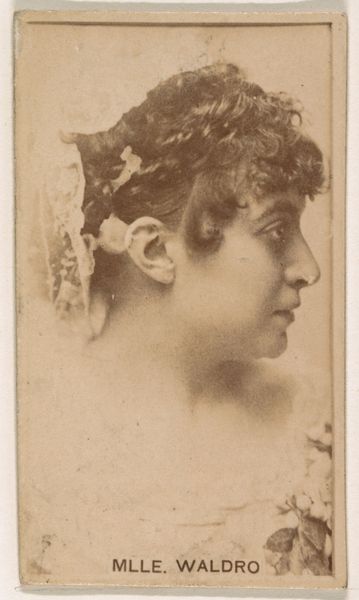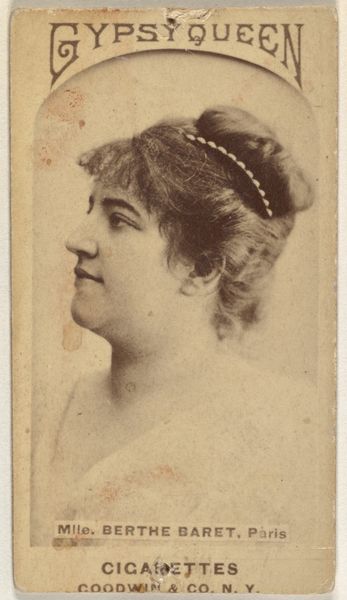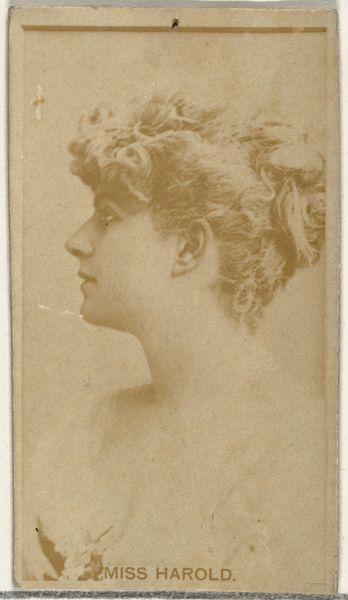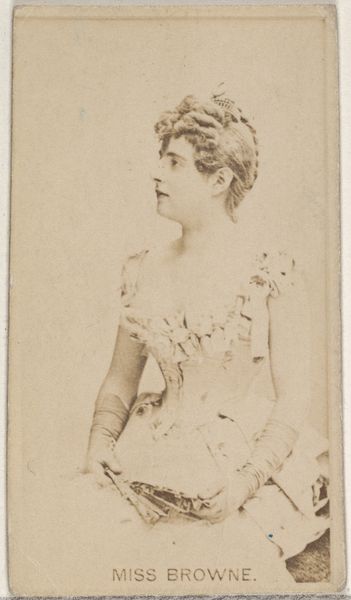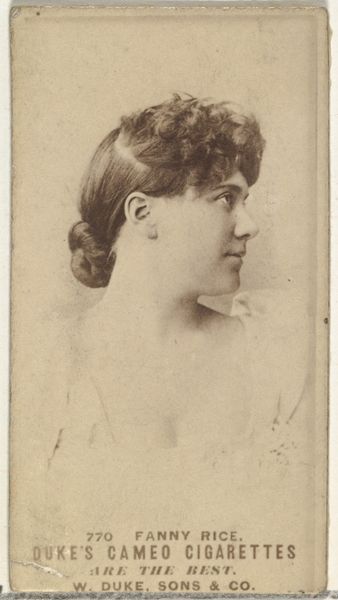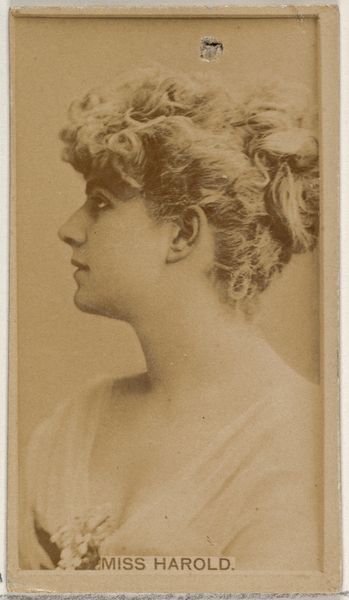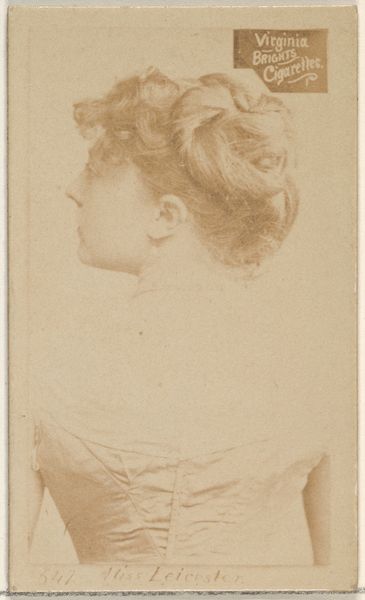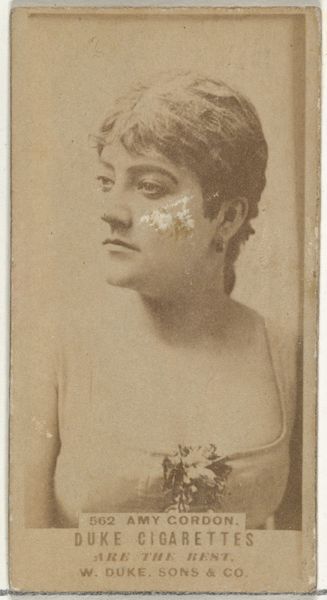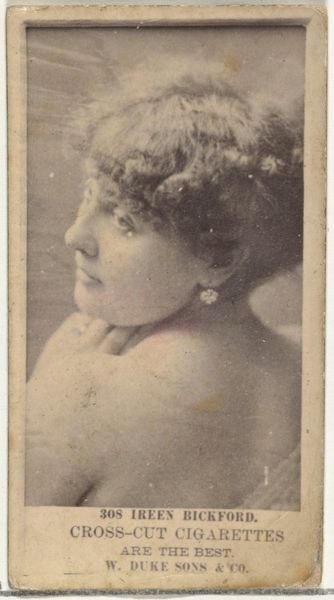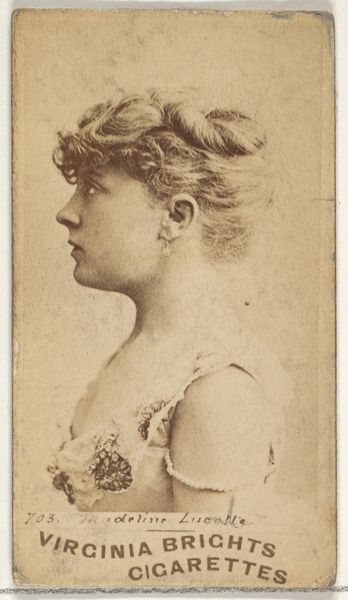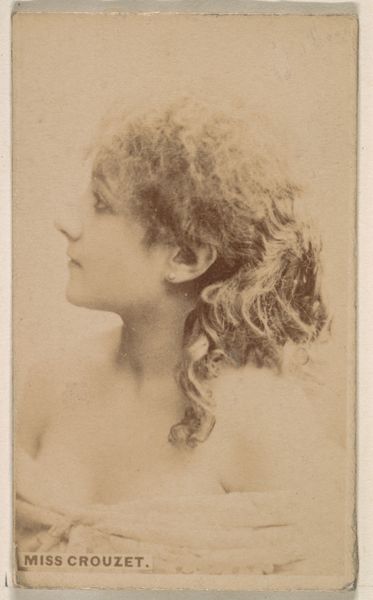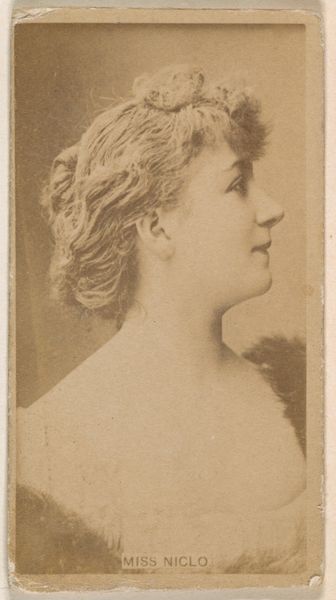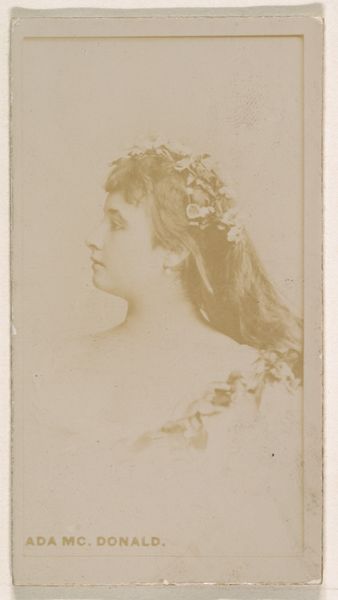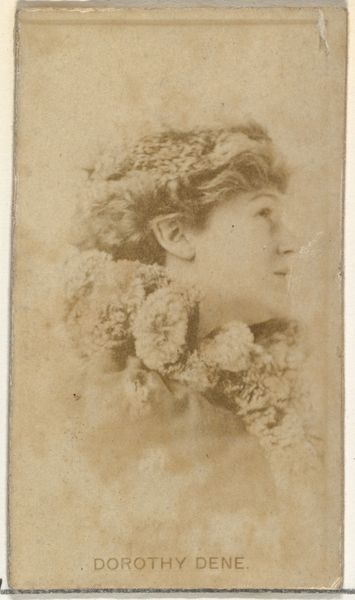
Mlle. Albert, Paris, from the Actors and Actresses series (N45, Type 1) for Virginia Brights Cigarettes 1885 - 1891
0:00
0:00
drawing, print, photography, albumen-print
#
portrait
#
drawing
# print
#
impressionism
#
figuration
#
photography
#
albumen-print
#
profile
Dimensions: Sheet: 2 3/4 x 1 3/8 in. (7 x 3.5 cm)
Copyright: Public Domain
Editor: This is an albumen print titled "Mlle. Albert, Paris," from the Actors and Actresses series for Virginia Brights Cigarettes, created by Allen & Ginter between 1885 and 1891. It feels like a peek into a bygone era, a profile shot with incredible detail, especially given its use as essentially a cigarette card. What do you find most compelling about this piece? Curator: For me, its significance lies in its role as a commodity. Originally designed to be collected alongside cigarettes, the print becomes a marker of its time, revealing the societal values attached to both entertainment and consumption. Consider the albumen print itself – a photographic process dependent on specific materials, labor, and trade routes of the late 19th century. How does this mass-produced image, intended for advertisement, challenge our conventional understanding of art as something unique and precious? Editor: So you're saying that the value isn’t in the artistic skill, but rather in what it tells us about the economy and the culture around it? It’s almost like an unintentional documentary artifact. Curator: Exactly. It invites us to think about who had access to these images and the material conditions that made them possible. It is more about mass culture and manufacturing. Where were the photographs taken, the albumen sourced? Who printed it, and who profited? Think also about how the subject's image as a Parisian actress of the day contributes value to a tobacco brand. What statement is it making, implicitly or explicitly, about class, sophistication, and taste? Editor: That shifts my understanding entirely. It's easy to just see a pretty face, but you’re making me think about how that image was used to sell a product and the entire network involved in its creation. Curator: Precisely. Recognizing art as entangled with systems of production and distribution allows us a more critical lens to view cultural values, gender, class, and consumer habits throughout history. The material gives an important glimpse of the economic system from which it came. Editor: I'll definitely look at these types of works differently from now on! Thanks for pointing out all these overlooked facets. Curator: My pleasure! It's all about recognizing art’s interconnectedness within broader systems.
Comments
No comments
Be the first to comment and join the conversation on the ultimate creative platform.
